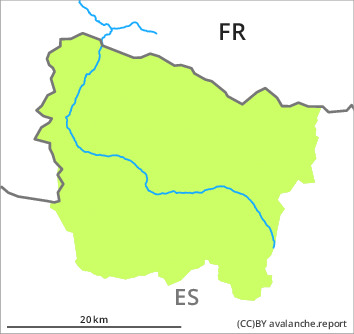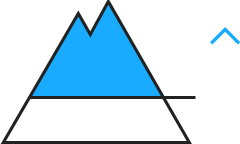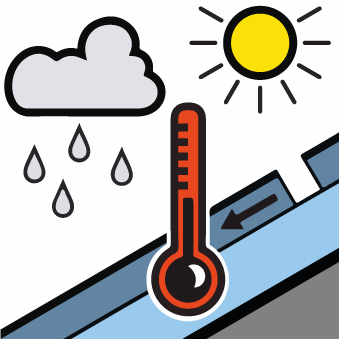
Danger level

2100m
Avalanche Problem

Persistent weak layer

2100m


Wet snow



Weak layers in the upper part of the snowpack represent the main danger. Dry and moist snow slides and gliding avalanches are possible.
The small wind slabs of the last few days must be evaluated with care and prudence in particular on west, north and east facing slopes. The wind slabs are to be found adjacent to ridgelines and in gullies and bowls and generally at high altitudes. They are lying on weak layers on shady slopes above approximately 2000 m. The wind slabs can be released by a single winter sport participant in isolated cases. In the south and in the east the avalanche prone locations are more prevalent and the danger is slightly greater.
On very steep shady slopes and in places that are protected from the wind dry snow slides are possible, but they will be mostly small.
In particular on very steep sunny slopes only isolated gliding avalanches and moist snow slides are possible until the temperature drops.
The conditions are generally favourable for backcountry touring and other off-piste activities in steep terrain.
On very steep shady slopes and in places that are protected from the wind dry snow slides are possible, but they will be mostly small.
In particular on very steep sunny slopes only isolated gliding avalanches and moist snow slides are possible until the temperature drops.
The conditions are generally favourable for backcountry touring and other off-piste activities in steep terrain.
Snowpack
>
Shady slopes: The old snowpack will be gradually soft. It is faceted; its surface consists of loosely bonded snow. In some cases the various wind slabs have bonded still only poorly with each other and the old snowpack. Released avalanches and stability tests indicate this situation.
Very steep sunny slopes: The surface of the snowpack will freeze to form a strong crust and will soften during the day.
Especially at intermediate and high altitudes a very large amount ofsnow is lying for the time of year.
Very steep sunny slopes: The surface of the snowpack will freeze to form a strong crust and will soften during the day.
Especially at intermediate and high altitudes a very large amount ofsnow is lying for the time of year.
Tendency
Wednesday: The danger of dry avalanches will persist. Gradual decrease in danger of gliding avalanches and moist snow slides as the temperature drops.